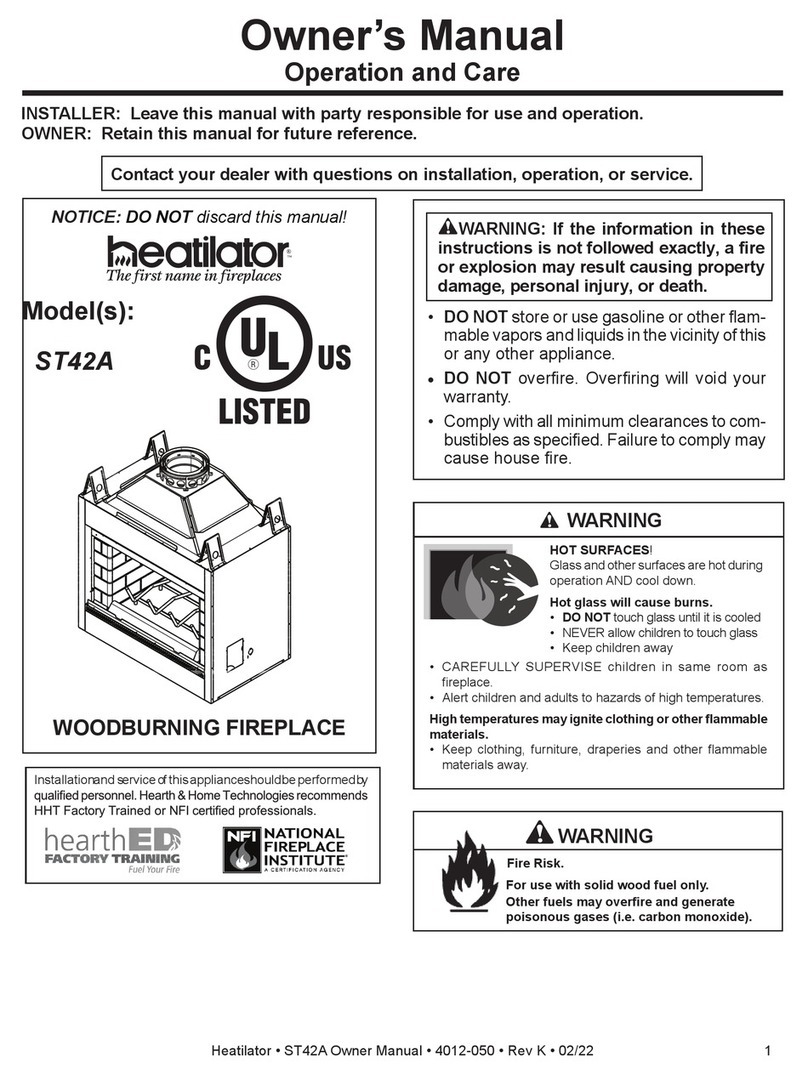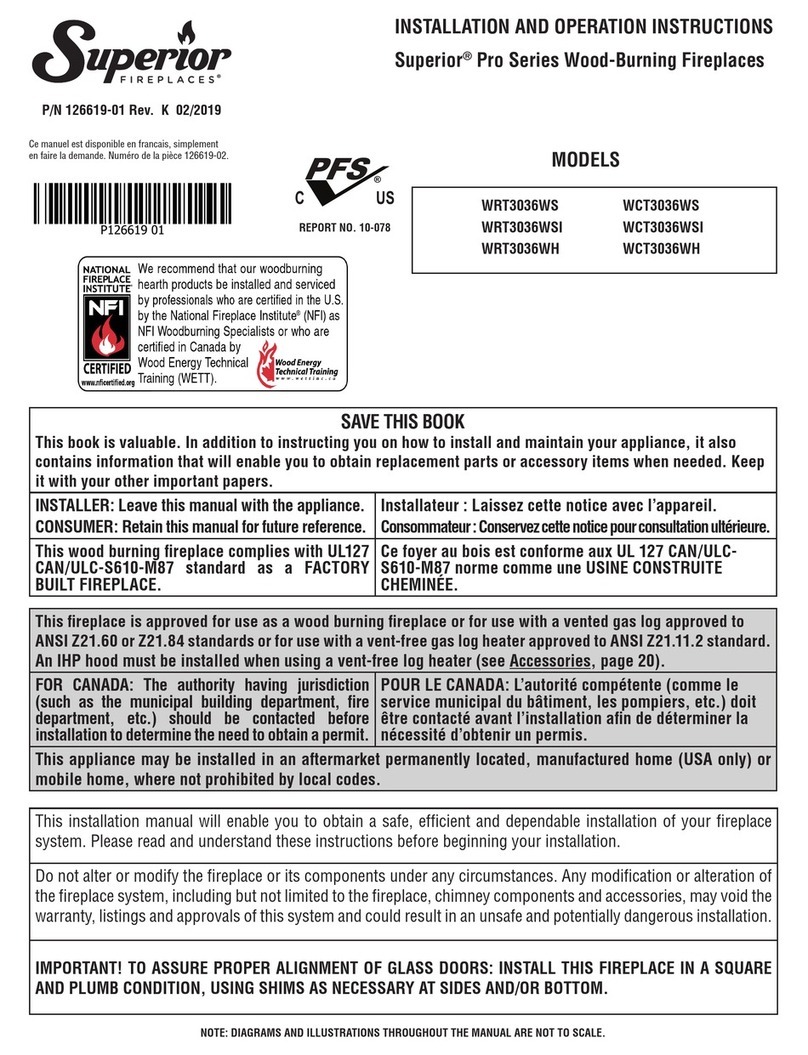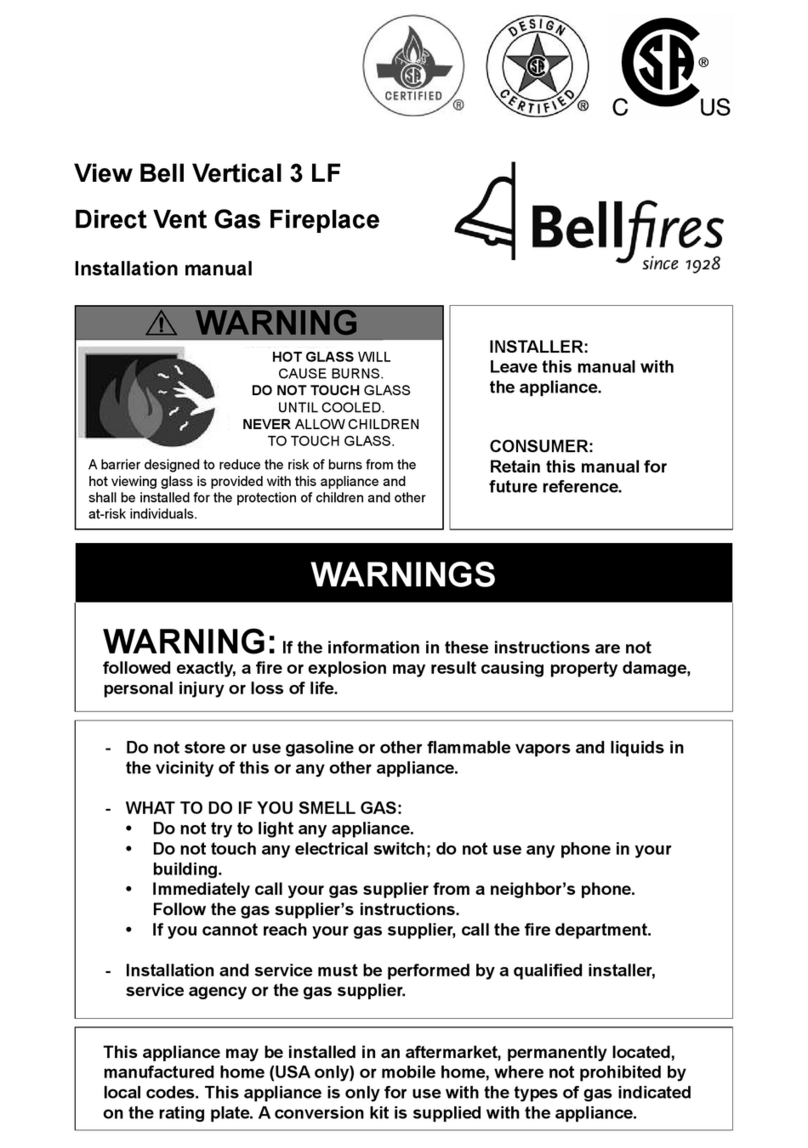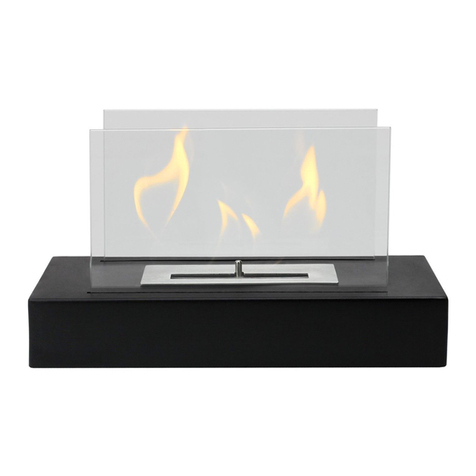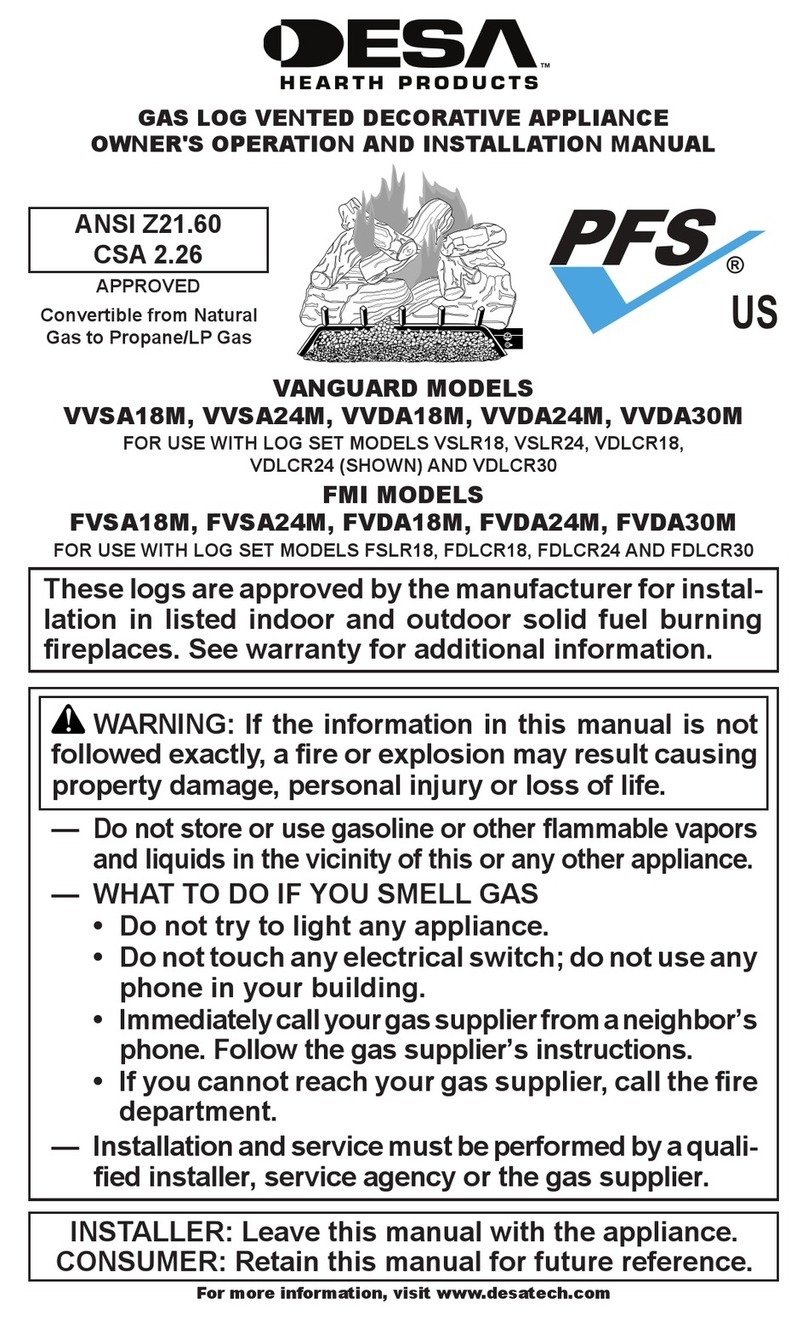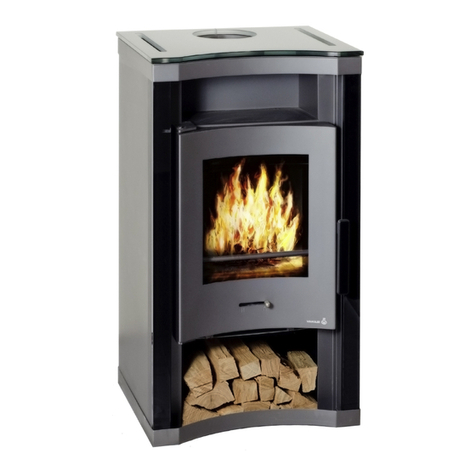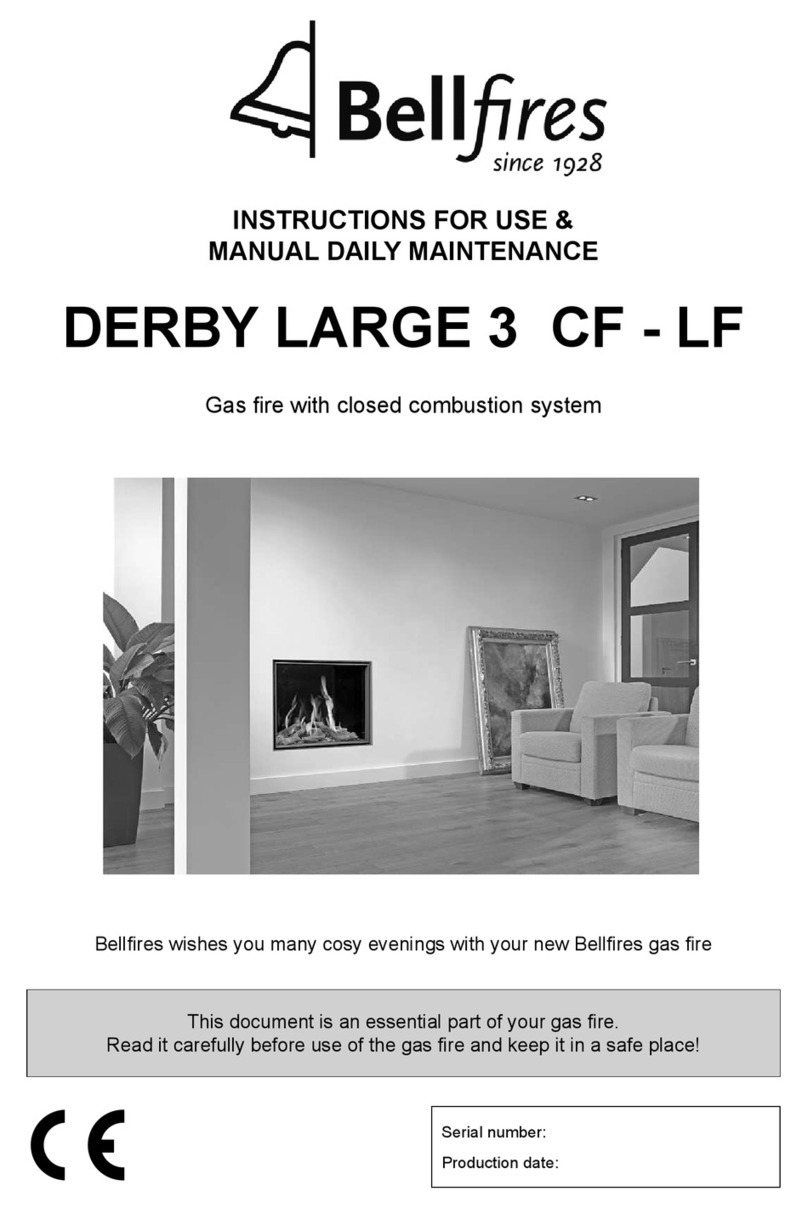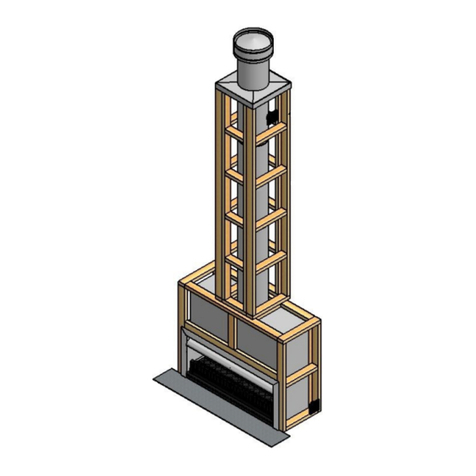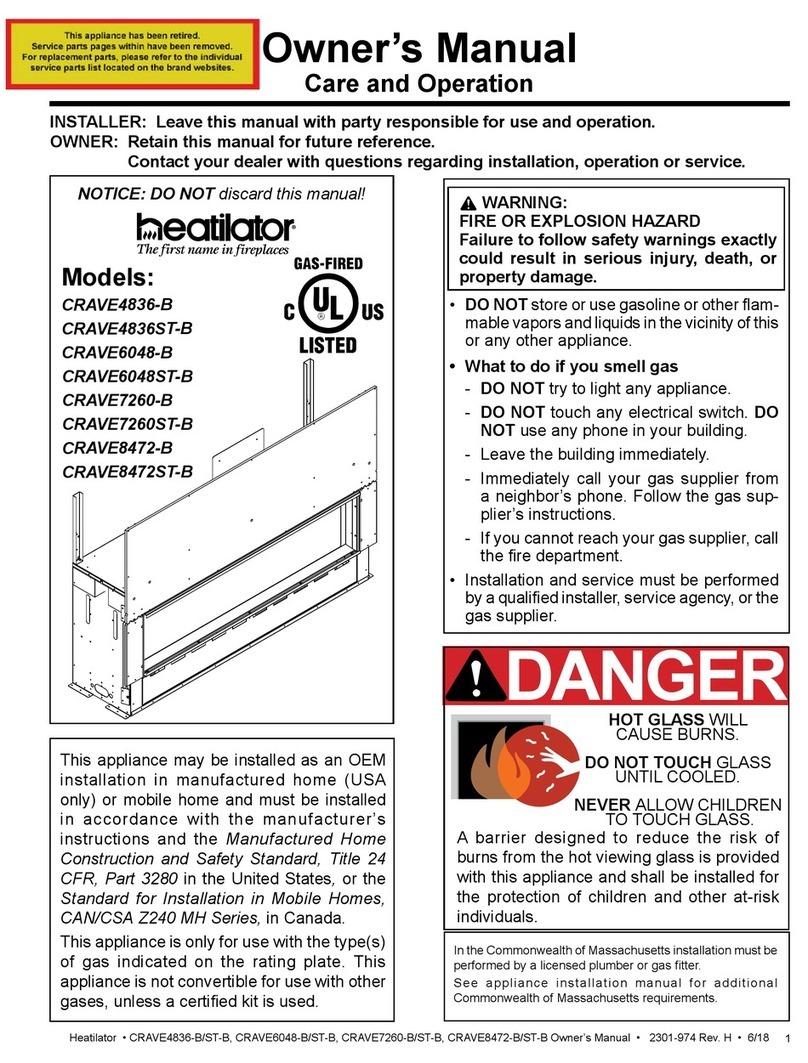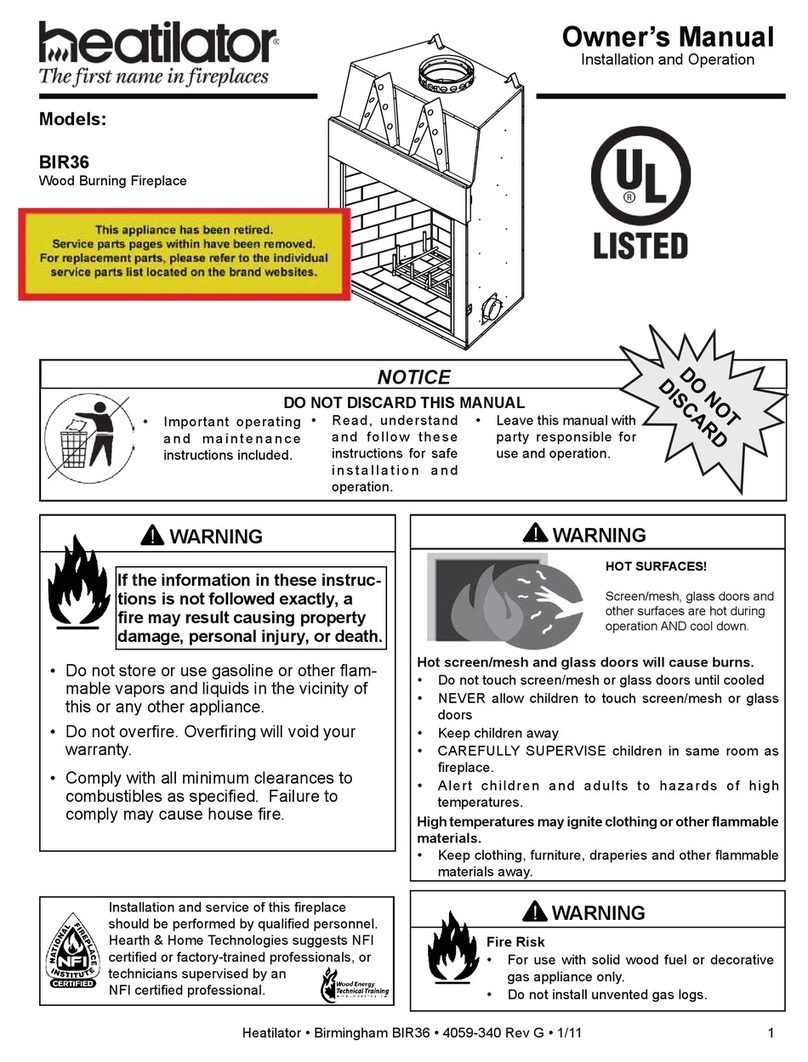
3.2.6 Medium Combustion
This is the recommended mode of operating the BIS Ultima™CF fireplace and should be
the one normally used since it will deposit the least amount of creosote on the glass and in
the chimney. The combustion air control must be 3/4 closed and pushed forward to close the
air boost. The precise setting will depend on many factors, including chimney length and the
moisture content of the wood.
For instance, a long chimney will necessitate closing the damper more. To obtain the proper
combustion, close the damper completely, then open it about 1/4" to 1/2". Three medium
size pieces of wood should be burning on a bed of hot coals. The heat output will be
approximately 30,000 BTU per hour and the loading time will be about every 3-4 hours.
Softwoods may be burned using this method but the time will be substantially reduced.
3.2.7 Slow Combustion
When the air combustion control is completely closed, the fireplace is in a slow combustion
phase. If the hearth is hot enough, slow combustion will not stop the fire, but there will be a
noticeable change in the flame pattern. The flames will be slow and may appear dirty if the
wood is too wet (moisture content of 20% and more). Do not allow the wood to burn without
flame, since this will produce excessive creosote in the unit.
Creosote may accumulate on the glass door. This method of burning should be used only
after operating the BIS Ultima CF fireplace with the air control opened to produce a hot fire
for about an hour or at medium pace for at least 3 hours. Slow combustion can be used at
night in order to reduce the heat output and to prolong the burn. The loading time will be
between 6-8 hours.
3.2.8 Refuelling For Best Performance
The BIS fireplace will operate best if attention is given to operating the unit with the damper
fully opened after refuelling in order to bring the firebox and the chimney system up to their
optimum operating temperature. Combustion efficiency is relative to firebox temperature. A
temperature of 500º C and up, with a visible flame, in the upper part of the firebox indicates
a maximum efficiency. To obtain this temperature, the fireplace must be operated with the
primary air and air boost controls fully opened during 10 to 20 minutes after reloading,
depending on the heat and on the moisture content of the wood. Once you have reached the
desired temperature, the air boost can be closed and the primary air set to a medium setting.
You know you have reached the desired temperature when, closing the primary air control,
you can see a flame at the top of the firebox. The benefit of this technique will be cleaner
glass, less creosoting, greater efficiency and the most pleasing fire for your enjoyment. If
your fireplace is equipped with a central forced air system, make sure the central blower is
turned off during reloading to avoid smoking problems.
